LA REVUE RUSSE N° 36
MONDE RUSSE ET IDENTITÉS
(2011)
RÉSUMÉS EN ANGLAIS (ABSTRACTS)
CATHERINE LEMAGNEN
A Component of National Identity : the Concept of Narodnost′
in XIXth century Russian Thought. An Attempt to describe the Problem (p. 11)
Considered initially as an aesthetic concept, instrumental in distinguishing the « Ancients » from the « Moderns » in the aesthetical debate of the 1820s, the concept of narodnost′ acquired in the 1830s a political dimension by becoming one of the pillars of Imperial ideology. Far from losing its literary connotation, the concept became a key issue in the struggle between Slavophiles and Westernizers in the years 1830-1840. With the « Great Reforms » of the 1860s, some thinkers started using the term « narodnost′ » to conceptualise a nation politically conscious of itself, like Revolutionary France, instead of a community linked by the sole instinctive feeling of belonging to an organic entity as described by German idealism. Subject to significant semantic evolutions resulting from virulent polemics, the concept of narodnost′ enabled the Russian world to be conscious of the evolution of its national identity, while underlining the importance of words and language in this process, thus taking vital steps in confirming identity.
OLGA BLINOVA
Emigration and the Quest for Identity in Zinaida Gippius’s Fiction Work (p. 21)
Based on Zinaida Gippius’s fictional narratives dealing with the issue of emigration, the present article focuses on the conception of Russian identity that these narratives promote. The analysis shows that Gippius’ thinking over the emigrants’ quest for identity deals with the notions of culture, freedom and initiatory travels. This is consistent with the political convictions of Gippius, who never accepted neither the October revolution nor Bolshevik authority, both unconcerned with the spirit of liberty initiated by Western civilization. The problem is that culture, an essential element of identity, can only exist when the wind of liberty blows. It is therefore the duty of emigrants to preserve and even enrich Russian culture. But for culture to last, one should learn to be free. Therefore the emigrants’ quest for identity is inseparable from their learning of how to be free, and their only possible way of life is the initiatory travel. It is then only through their physical and to some extent metaphysical moving away from the native country that, according to Gippius, they may have a chance to return to it some day.
SVETLANA MAIRE
The Quest for Identity in Russian Immigrants’ Writings in early 20th century France (p.31)
At the beginning of the 20th century, millions of Russians had to flee their country because of social and political upheavals. Most of them chose Europe, and especially France, as their place of escape. Far from their native country, the Russians experienced a sense of loss. Consequently they felt an urge to question national identity. In this paper, I focus on this search for identity in Russian immigrants’ writings. The first part of the paper gives a description of the Russian diaspora during this period. The second is focused on three aspects : language, literature and religion.
STANISLAS GAUTHIER
Pushkin after Emigration and Soviet Patterns : a Landmark in Russian Identity ? (p. 43)
Inspired by the works of Judith Schlanger, Isabelle Poulin and Stephanie Sandler, this article aims at understanding how the words chosen by Pushkin define a Russian identity without any identification with rigid patterns. Pushkin’s works offer a paradigm within which a moving and imaginative private life stands out against an indifferent world. In Eugene Onegin, for example, a living community surrounds Tatiana’s pain expressed by contractions and enjambments. Djamilia by Aïtmatov echoes that kind of writing when the off-camera end paradoxically makes the characters brighter. Erected by authoritarian regimes and, as Droujnikov notes in Pushkin’s second wife, often mistaken for others in the age of globalization, the statue of Pushkin does not fit the freedom of his works. Indeed, the creativity of Pushkin should rather encourage us to translate, rewrite, and play with his words.
NINA SOROKINA
The Issue of Identity in Russian and Soviet Advertising Posters from the 1900s-1920s (p.53)
Advertising posters are small pieces from a larger puzzle, which reflects the economic, artistic and political way of life of any given country at any given time. Each of these pieces reveals the historical context which produced the poster, as well as the identity of the people who ordered it, the people who designed it, the people who produced it, and the audience for which it was intended. The present paper focuses on the issue of commercial identity in Russian and Soviet posters from the 1900s-1920s.
ELENA OURJOUMTSEVA
Viktor Shklovsky and the literary and material Life in the 1920’s. (p.67)
Viktor Shklovsky, one of the founding fathers of the Russian formalist group OPOYAZ, devoted much of his work, together with other theoreticians, in order to develop Poetics as an independent science. His efforts were nevertheless troubled by the difficult political and social situation of the late 1910s – 1920s in Russia. Therefore the hard material conditions he was experiencing tended to have an influence on his theoretical priorities. The acceptance of the pressure of the « literary material » he was fighting for logically led to the acceptance and use of political and material pressure to define his identity as a writer and language theoretician.
CLARA DARMON
The Professional Identity of Filmmakers in the USSR and the Russian Federation (1957-2009) : Construction, Claims and Struggles (p. 77)
By creating the Union of Soviet Filmmakers (SK) in 1965, the Communist Party aimed at gathering the professional filmmakers within a bureaucratic structure that would serve the official ideology. The SK appeared at first as a pure executive organ of the Party’s policy : the system of honorific titles, of appointments by the top, the promotion of the most docile filmmakers as heroes to which one should identify and the plethora of seminaries, conferences on ideological themes were different ways of imposing identical values to every filmmaker. However such a system contradicted talent as the brand value of the SK and rapidly led to a professional crisis. The situation was bored as other factors enabled the filmmakers to construct their identity on personal values : the professor of the Institute of Cinematography at first, then the comrades in the SK recognized the individual style of every member, unlike the Party functionaries. The end of censorship under the Perestroika engendered a radical change, as new values were claimed, such as democracy and creative freedom, values associated with the young generation. At the same time though, the drastic fall of professionalism led to the election of the conservative filmmaker N. Mikhalkov at the head of the organization, which led the SK to once again collaborate with the State policy, notably by promoting the return to « Slavic values », religion and patriotism. Nevertheless, behind this program the Union has lost its unity as the authoritarian policy of Mikhalkov does not enable the members to take an active part in an organization in which they now feel alienated.
ELENA MORENKOVA-PERRIER
The Political Use of the Past connected with the Construction of National Identity in Contemporary Russia (p. 89)
More than with facts, history is concerned with their representation. This statement takes a particular meaning in the context of contemporary Russia, where the issue of the political use of the past is tightly connected with the construction of national identity. In order to analyse how the contemporary Russian authorities reassess Soviet history, I focus on school textbooks. Indeed, textbooks largely shape the self and the other, and are a major vector of socialisation. The analysis of recently published school textbooks on the soviet period highlights three dominating tendencies of the actual history narrative : the attenuation of the “dark pages” of Soviet history, the reconstruction of historical continuity and the presence of a strong patriotic dimension. These three elements seem to set the basis of a new Russian national identity.
Keywords : use of the past, history rewriting, historical representations, school textbook
SÉBASTIEN CAGNOLI
Staging a non-Slavic Identity in Russia : Komi Drama in a Changing Russian Society (p.101)
The Komi, a Finno-Ugric people of North-Eastern Europe, have been part of Russia since the 14th century. After the Revolution, the Civil War led to the creation of a Bolshevik Komi State (1921), which later became an autonomous subject of Soviet Russia. Among intellectuals who remained in Russia, the 1920s and 1930s were times of optimism and creativity ; the national language became state language, and literature flourished in all genres. Later, with the 1990 declaration of sovereignty, the Komi State was to be transformed ; but after decades of russification, demographic and social realities were quite different from those of the time of the 1917 Revolution.
Undoubtedly Komi identity came particularly forward in these two decisive periods, and bilingualism played an important role in this process, though in different proportions. By exploring a literary genre with a wider potential audience – drama –, I intend to present some aspects of contemporary Komi cultural identity, especially in relation to their territory and language.
MARIE CASEN
Some Aspects of social Transformation in Udmurtia since the 1990s. (p.115)
The article presents various elements to appreciate the situation of the Udmurt people in contemporary Udmurtia.
First, the author focuses on the main measures of linguistic and cultural preservations initiated after the collapse of communism : he analyzes the role and function of the Ministry of national politics, the Comity for language modernization, the actions of national associations and the place of teaching and research in Udmurtia today.
Then, the author focuses on the situation in the main city in Udmurtia : Izhevsk. The Udmurt culture being mainly rural, it is paradoxical that Izhevsk should gather the large majority of the institutions and actors promoting the Udmurt language and culture. As a complement, the study deals with the way Udmurt people occupy the city, and the negative and positive effects of this new space investment (folklorization vs. contemporary Udmurt creation).
IRINA KANTARBAEVA-BILL
Multiple Islam and the Quest for Identity of Centralasian Intellectual Elites Under Russian Rule (p. 125)
The Russian conquest provoked the emergence of an identity quest among the peoples of Central Asia, which was only accelerated during the Soviet period. The present paper aims at reconsidering the interaction between the Tsarist power and the Kazakh noblemen under Russian rule : far from fueling the islamic resistance as in other parts of Russian Turkestan, this cooperation largerly contributed to the consolidation of Kazakh proper and unique sense of national identity.
Key words : Islam in the Kazakh steppe, Chokan Valikhanov, Hanafi orthodoxy, customary laws
NATALIA SCURTU
The « Moldovanists » and « Romanianists » within the Committee of Moldavian Sciences : a look at Moldavian Identity in the Autonomous Moldavian Soviet Socialist Republic (p.137)
In the late 1980s - early 1990s, Moldavian identity and language were seen as failed constructions from the Soviet period. Twenty years after the independence of the Republic of Moldova (1991), one can still observe the complexity of representations and identity claims of its citizens, which is bound up with the complexity of representations and linguistic claims. The author uses the example of the Autonomous Moldavian Soviet Socialist Republic (AMSSR), in order to question the notion of language in its widest sense and to observe how language contributes to imagine communities in different ways.
ALIX DRUGEAT
Lezgi and Talysh : a Comparison of the Identity Construction Process of two Minorities in Azerbaijan (p. 149)
In this article I study the identity construction process of two Azerbaijani’s national minorities : the Talysh and Lezgi people. I try to understand the causes of the identity rebirth of these people, the forms of mobilization used by autonomist and independantist movements and to see the impact of these revendications on Azerbaijani society as a whole. Lezgi people enjoyed Moscow’s support for the sake of Russia’s strategic interest, whereas Talysh people gained advantage from a trouble political context to raise their claims. At a certain point, these two people intensified their demands either because they felt disavantaged by the new political context or because this new context offered an opportunity to achieve a greater legitimacy. Today, these two minorities are less visible on the national polical scene, though the equilibrium seems to be precarious and therefore the central power should be careful with the way it handles its identity policy.
KARLYGASH ABIYEVA
Language Issues and the Construction of National Identity in Kazakhstan (p.157)
Contemporary Kazakh society is a mixed society, in which cohabitate traditional Kazakh culture, the Soviet heritage and contemporary culture. Since the time of independence, the Republic of Kazakhstan has been building a new Kazakh national identity, indifferent to the existing situation of bilinguism (Russian and Kazakh). The national policy of “kazakhstanisation” has been implemented since 1991 in public institutions, mass media and education. The article aims at analyzing the language issues in post-soviet Kazakhstan in relation with the construction of national identity. The analysis is based on Anderson’s concept of “national imaginary” and Gellner’s conception of nation. First, the article shows the role of the Russian language in the “national imagination” from the points of view of history and demography (the accession to the Russian Empire, the migration and settlement of different ethnic groups), and from the point of view of sociology (the Russian language as a symbol of urban culture and social mobility, as the language of elite education). The current reorganisation of Kazakhstan’s linguistic landscape is conditioned by the return of the Kazakh diaspora from abroad. These immigrants, called “Oralman”, are largely Kazakh speaking. For historical, geographical and social reasons the Russian language occupies so far the strongest position in Kazakhstan’s national imagination. But the policy of kazakhstanization, which brings an enlargement of the social functions associated with the use of the Kazakh language, could very well change the situation in the future.
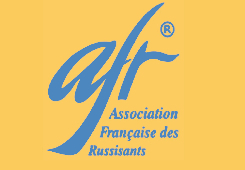
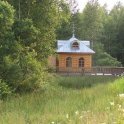
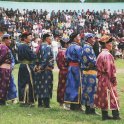

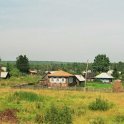
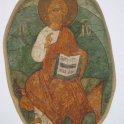
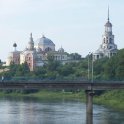

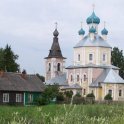

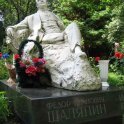
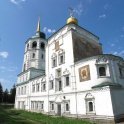

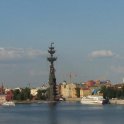

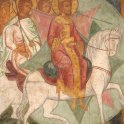
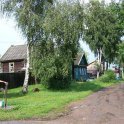



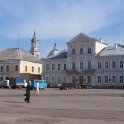
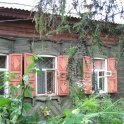

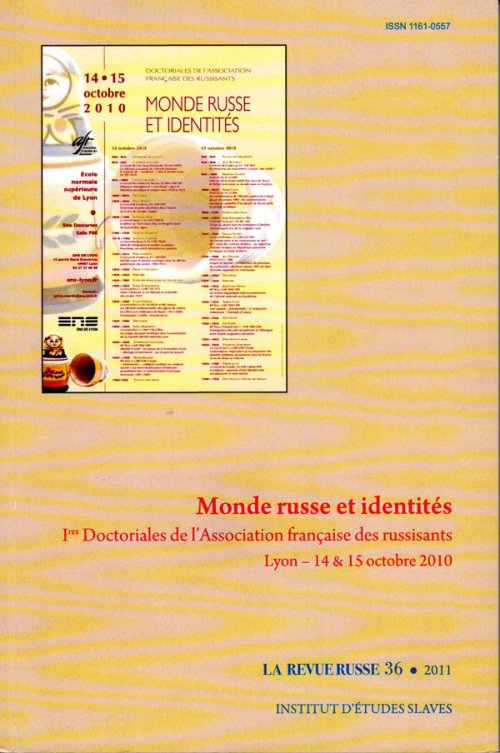
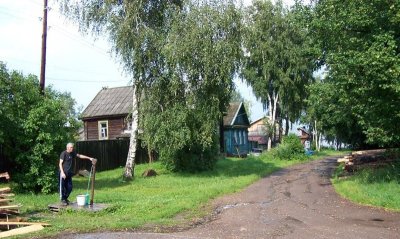
 Sommaire
Sommaire